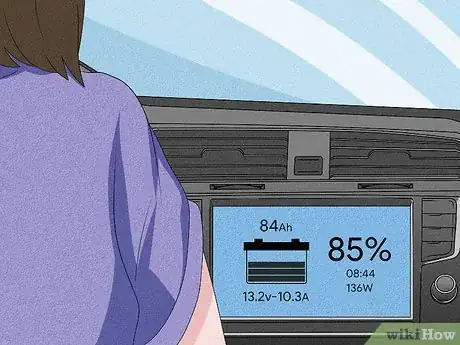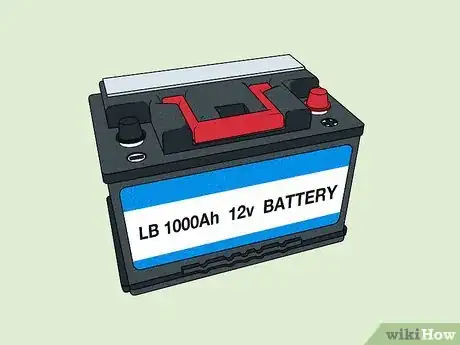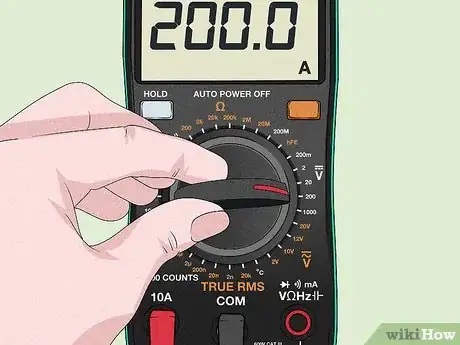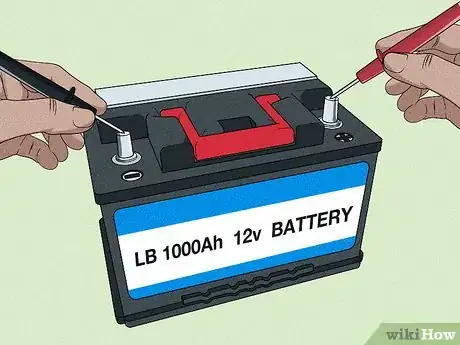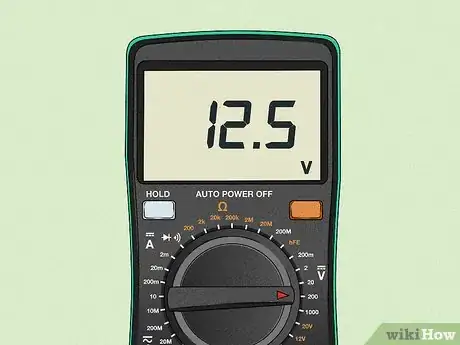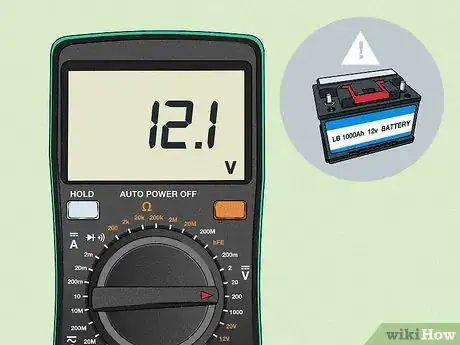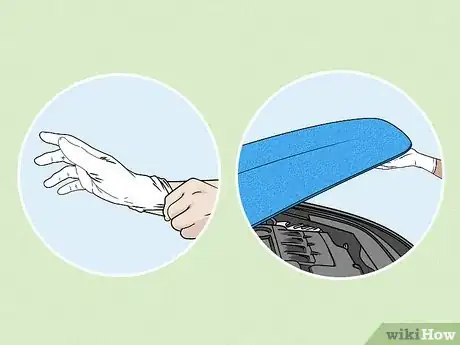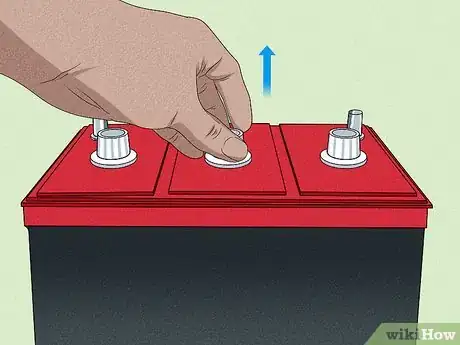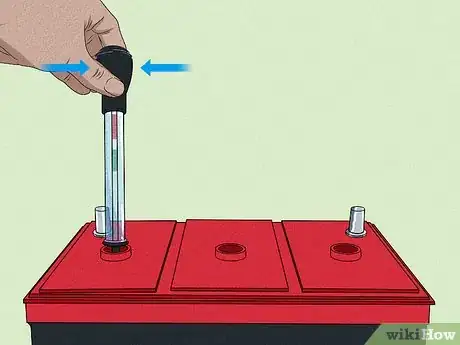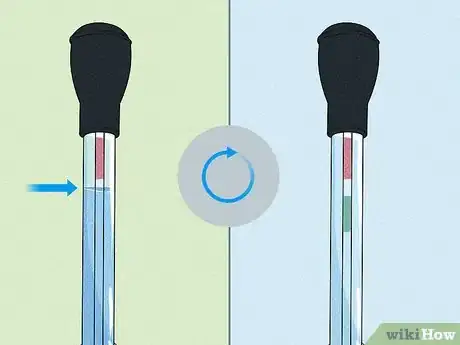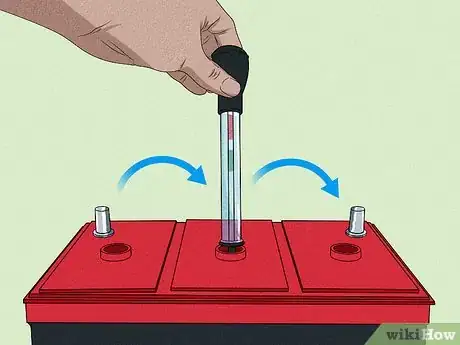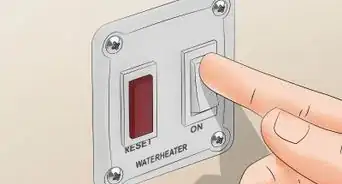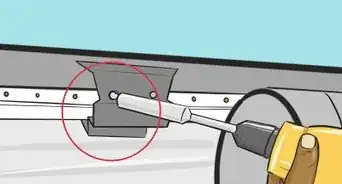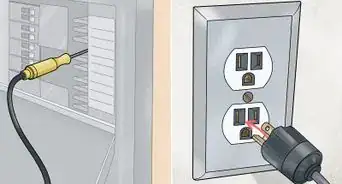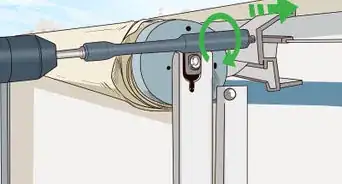X
wikiHow is a “wiki,” similar to Wikipedia, which means that many of our articles are co-written by multiple authors. To create this article, 13 people, some anonymous, worked to edit and improve it over time.
This article has been viewed 61,876 times.
Learn more...
It is important to "tune up" your recreational vehicle's battery at least once every year. You may also want to check the battery before going out on your latest adventure. This article will tell you how to check your RV battery.
Steps
Method 1
Method 1 of 3:
Using Your Monitor Panel
-
1Look at your dashboard monitor when your RV is not plugged into an electrical outlet.[1]
- If you attempt to check your battery this way while it is plugged in, you will get a false charged reading.
-
2Turn on a couple of lights and check your monitor again for an accurate reading under a small load.[2]
Advertisement
Method 2
Method 2 of 3:
Voltage Test
-
1Know what voltage your battery is. Most commonly, you will have a 12-volt battery, but sometimes you can have a 6-volt battery.
-
2Turn on your voltmeter and select DC voltage. Open the hood of the RV.[3]
-
3Touch the voltmeter's red lead to the positive terminal of your battery. Place the black lead on your battery's negative terminal.[4]
-
4Read your screen or indicator (if your meter isn't digital). A 12-volt battery should read between 12.5 and 12.7 volts when it isn't being used. A 6-volt battery should read between 6.25 and 6.35 volts.[5]
-
5Anything less than 12.5 or 6.35 volts indicates your battery needs to be charged or replaced (if its charge depletes quickly).[6]
Advertisement
Method 3
Method 3 of 3:
Specific Gravity
-
1Put on protective gear and open the hood.
-
2Remove the vent caps if your battery is not a sealed system.
-
3Check the electrolyte levels in each cell. Refer to your battery's instructions if you are unsure of the levels in your battery cells.[7]
-
4Fill a hydrometer and drain it twice for each cell before taking a reading.
-
5Test the electrolyte level from a cell using the hydrometer and then drain the water back into its own cell. Record the number for each cell.
-
6Test all cells and then replace your vent covers. Your specific gravity reading for each cell should be between 1.235 and 1.277.
- If the readings of all the cells average below 1.277 you will need to charge your battery.
- If there is a difference of .050 or more between the highest cell reading and the lowest cell reading, your lowest cell is probably weak or dead and your battery may need to be replaced.
Advertisement
Warnings
- Never try to open a sealed battery. There is no way to add water to these batteries and attempting to do so can result in serious injury and destruction of the battery.⧼thumbs_response⧽
- Always wear protective clothing and eyewear when using a hydrometer. The water contains battery acid, which can burn skin and eyes.⧼thumbs_response⧽
Advertisement
Things You'll Need
- Voltmeter
- Hydrometer (test for specific gravity)
- Protective gloves (specific gravity)
- Eyewear (specific gravity)
- Water (if needed)
References
- ↑ https://www.dutchmen.com/blog-details/content-container/know-your-battery-stay-in-charge-with-rv-maintenance-tips-from-dutchmen-rv
- ↑ https://www.dutchmen.com/blog-details/content-container/know-your-battery-stay-in-charge-with-rv-maintenance-tips-from-dutchmen-rv/
- ↑ http://exclusive.multibriefs.com/content/battery-issues-understanding-your-rvs-electrical-systems/recreation-leisure
- ↑ http://exclusive.multibriefs.com/content/battery-issues-understanding-your-rvs-electrical-systems/recreation-leisure
- ↑ https://koa.com/blog/extend-the-life-of-rv-batteries/
- ↑ https://koa.com/blog/extend-the-life-of-rv-batteries/
- ↑ https://rvshare.com/blog/7-things-need-know-rv-battery/
About This Article
Advertisement
